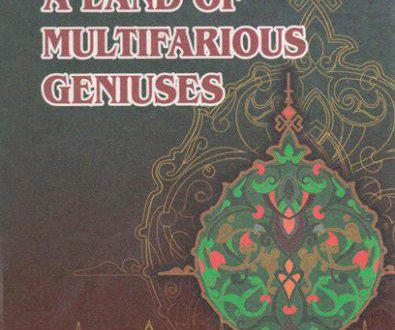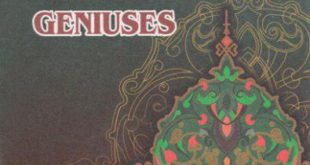One of the famous literary men of the 15th century was Davlat-shah ibn Alauddavla Bakhtshah al-Ghazi as-Samarqandi. Information dealing with his biography is very little but according to some information mentioned in his book “Tazkirat ash-shuara” (Characteristics of poets), he was born in the family of a well-known military leader and statesman. His father Bakhtshah was one of the closest people and authoritative Amirs of the ruler of that time Shahrukh Mirza. He took an active part in Shahrukh’s military marches and showed examples of devotedness and heroism to the ruler. Therefore, he earned the respectable title “al-Ghazi” (Victorious). The following words provided in his “tazkira” may prove the correctness of this idea. He wrote: “My father was the closest friend and staunch people of the ruler Shahrukh Mirza. My father told me that once aridity had been so great and the year had been too dry that there had never been a* single rainy day in Khorasan, particularly in Herat. Dryness of the climate had reached such a degree that from the beginning of the winter up to the middle of the spring not a single drop of rain had fallen from the sky.” My father went on: “Once I decided to appeal to the king for the sake of a poor woman. When I woke up early in the morning there came some drops of rain through the chimney of the house. Then raindrops began fall continuously. At this very moment, I got up and hurried to the audience of the ruler of the Islamic world. Before I knelt down to bow to the king, he said: “Hey, Alauddavla, which of us was awake when it began to rain, me or you?””
Though Davlatshah’s date of birth is unknown to us, it is possible to guess this date relying on the information given in his book “Tazkirat ash-shuara”. He writes that he began writing his book at the age of 50. We know that the book was finished in 892/1486-87. If it had taken two or three years to write this big and important book, Davlatshah must have been born approximately in 1435-1436.
Davlatshah Samarqandi was interested in getting knowledge at his early age. At the beginning of his education, he used to attend the lessons delivered by an acknowledged and respected scholar of his time, lawyer and poet Khoja Jalaliddin Fazlullah Abu-l-Lays as-Samarqandi. Up to 1480, he had not been engaged in science and poetry but been busy in the service at the court of the king and in the military service. First, he had served at the court of Abu Sa’id Mirza (up to 1469) then at the court of Husain Bayqara (1468-1506) in Herat and taken an active part in the wars held during his reign. The last war in which he had taken part was in Chakmansarai between Sultan Husain Bayqara and Sultan Mahmud Mirza (Sultan Abu Sa’id Mirza’s son, the ruler of Hissar-Shadman and Badakhshan). According to the information mentioned by a famous historian of Herat of that time Khandamir (1474-1535), this war was in 1471. Regretting for the time of his youth spent in vain, he wrote later: “I am a poor creature, have spent my adult years doing nothing useful. Instead of earning useful creative features for myself, I was lost in wars and military affairs. I spent on vain efforts the very short period of life (three days only) given to me by God as an investment for the eternal happiness. Once when I decided to count my years of life, I became sure that fifty stages of it had already been spent in the fields of vainness”. Davlatshah mentioned these words approximately in 1485 on the eve of writing the preface of his famous book “Tazkirat ash-shuara”. He lived for 60 years. In accord with the information provided in the book “Mirat us-safa” (A mirror of purity) by Muhammad Ali ibn Muhammad Siddiq Nishapuri (the first half of the 18th century), he died in 900/1495.
At the end of his life, Davlatshah Samarqandi left the court service and decided to collect all the necessary information concerning the writers and poets of his time and his predecessors and compile a book about them. While writing “Tazkirat ash-shuara”, Davlatshah Samarqandi collected a great amount of historical sources written before him and used them in his work. The list of books he used in his work is as follows:
- “Manaqib ash-shuara” (Good features of poets) written by Abu Tahir Khatuni (the end of the 10th century and the first half of the 11th century);
- “Lubabu-l-albab” (The heart of hearts) written by Nuriddin Muhammad Avfi (1172-1233);
- “Kitab masalik ul-mamalik” (A book about roads and ‘countries), a geographical and historical survey written by Istakhri;
- “Zayn ul-akhbar” (The decoration of histories) written by Gardizi;
- “Tarikhi ali Sabuktakin” (The history of Sabuktakin) written by Abulfazl Bayhaqi as well as other works of his contemporary poets and historians.
The book “Tazkirat ash-shuara” contains short but very useful and precious information about the life and creative activities of 155 poets who lived in Central Asia and Iran in the 7th-15th centuries. Of course, like most historical sources written at that time, Davlatshah Samarqandi’s “Tazkirat ash-shuara” has its own merits and flaws. Reading the book, one can come across some mistakes in the dates or place of birth of the poets. There are also some confused facts that lack exactness. Nevertheless, the book is of great importance as it contains lots df positive qualities. It covers the history of a great period of time, i.e. eight hundred years, in which poets of Iran and Central Asia lived and created their works.
 Imom Buxoriy xalqaro ilmiy-tadqiqot markazi bukhari.uz
Imom Buxoriy xalqaro ilmiy-tadqiqot markazi bukhari.uz










